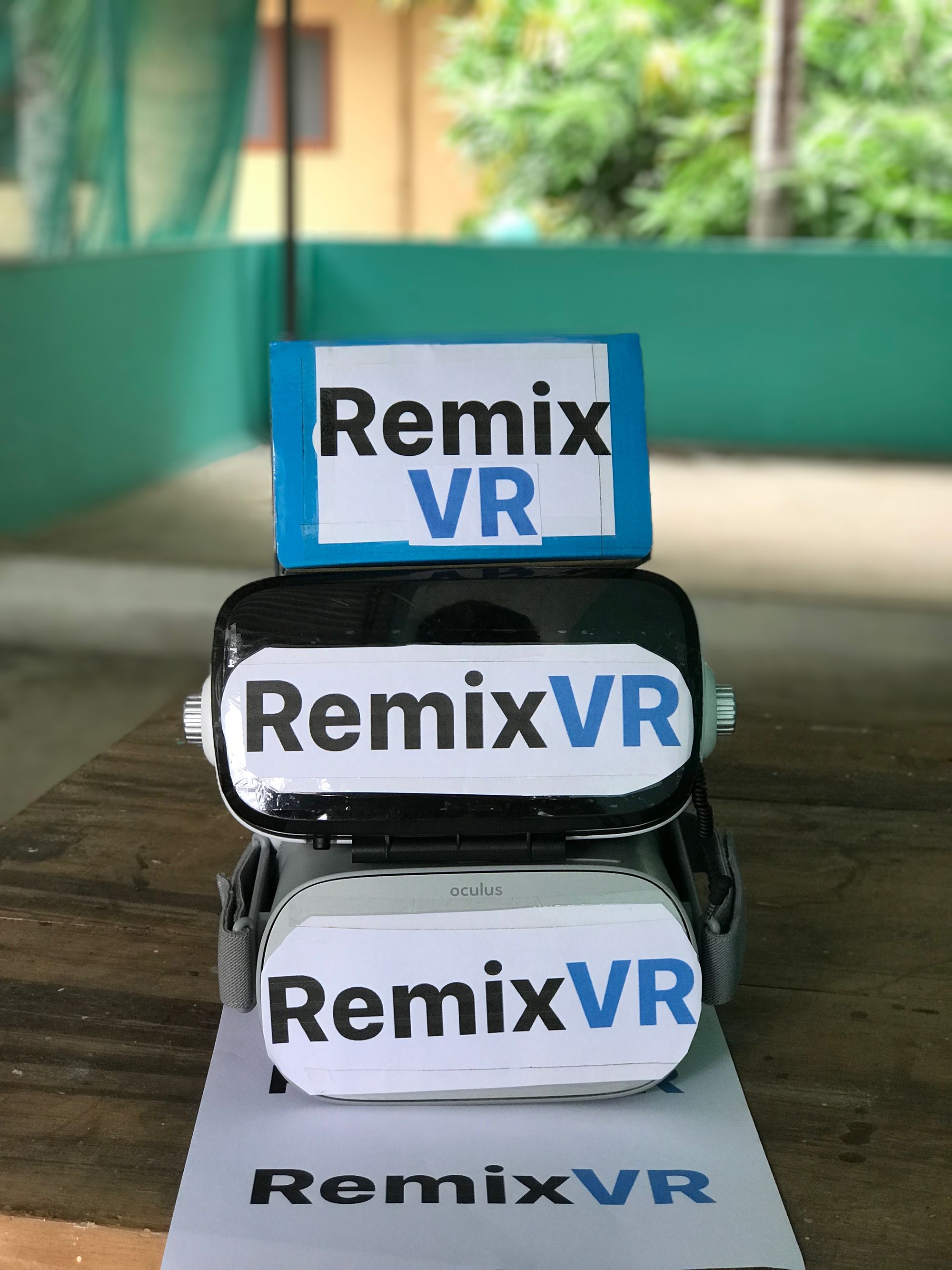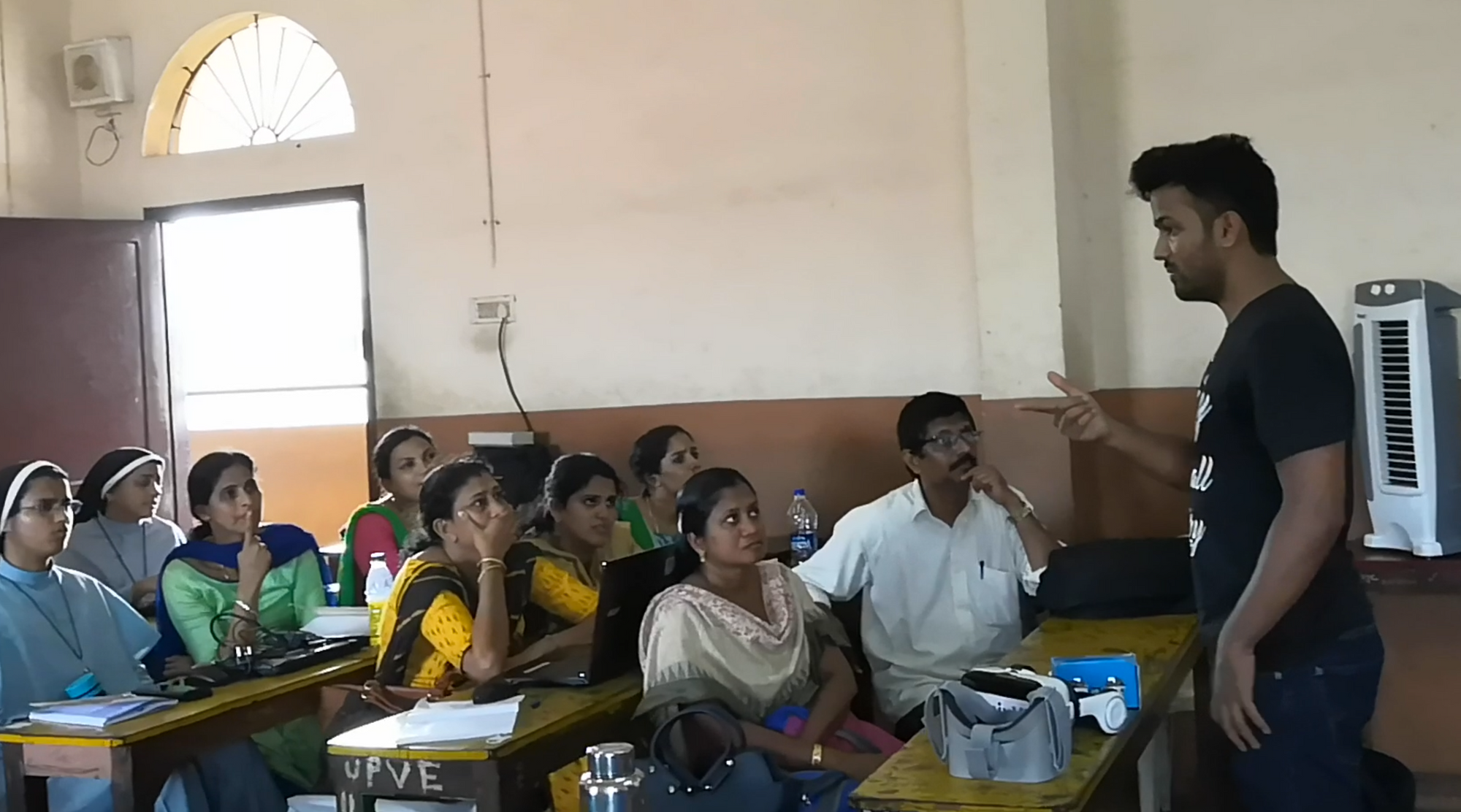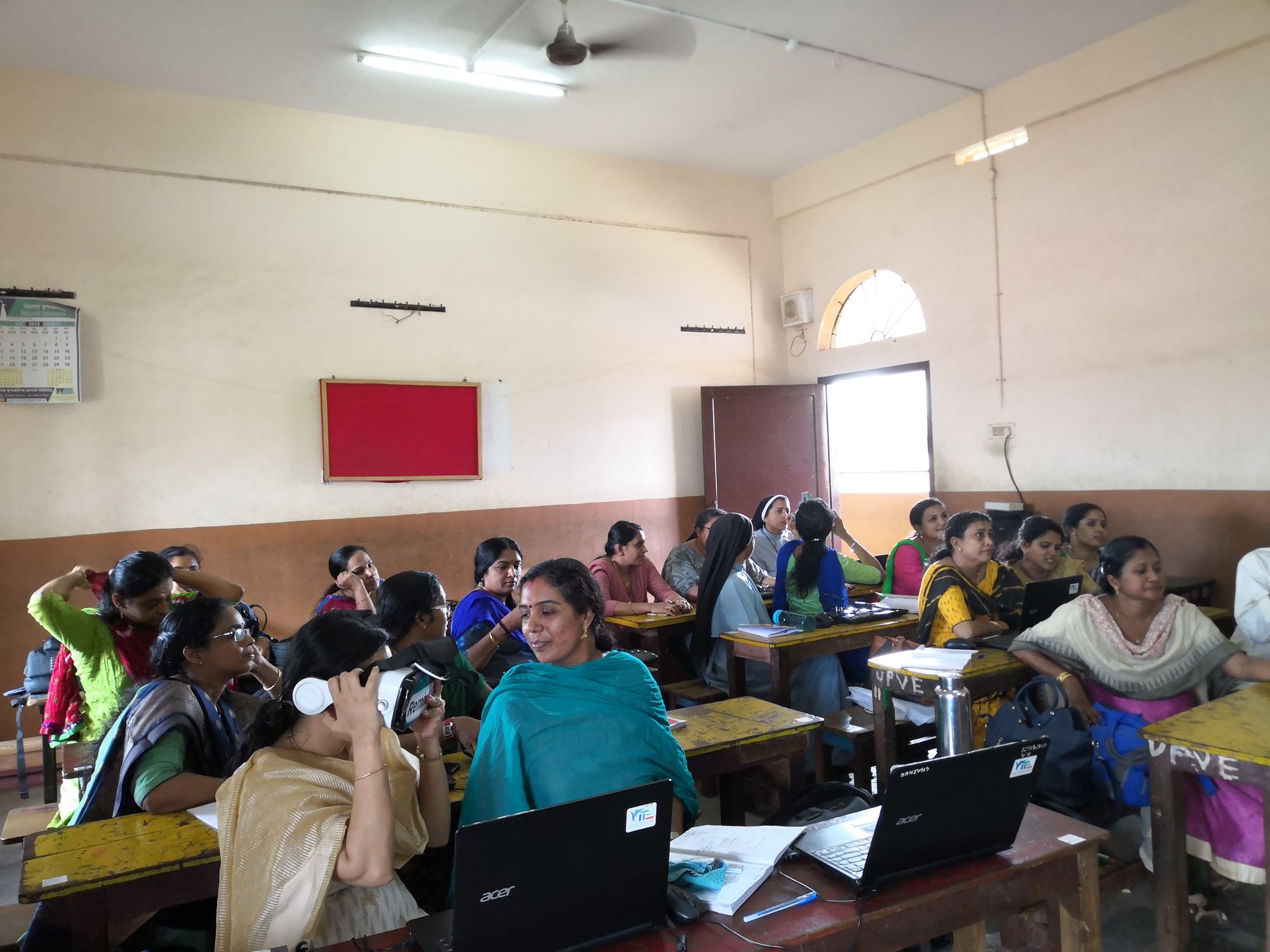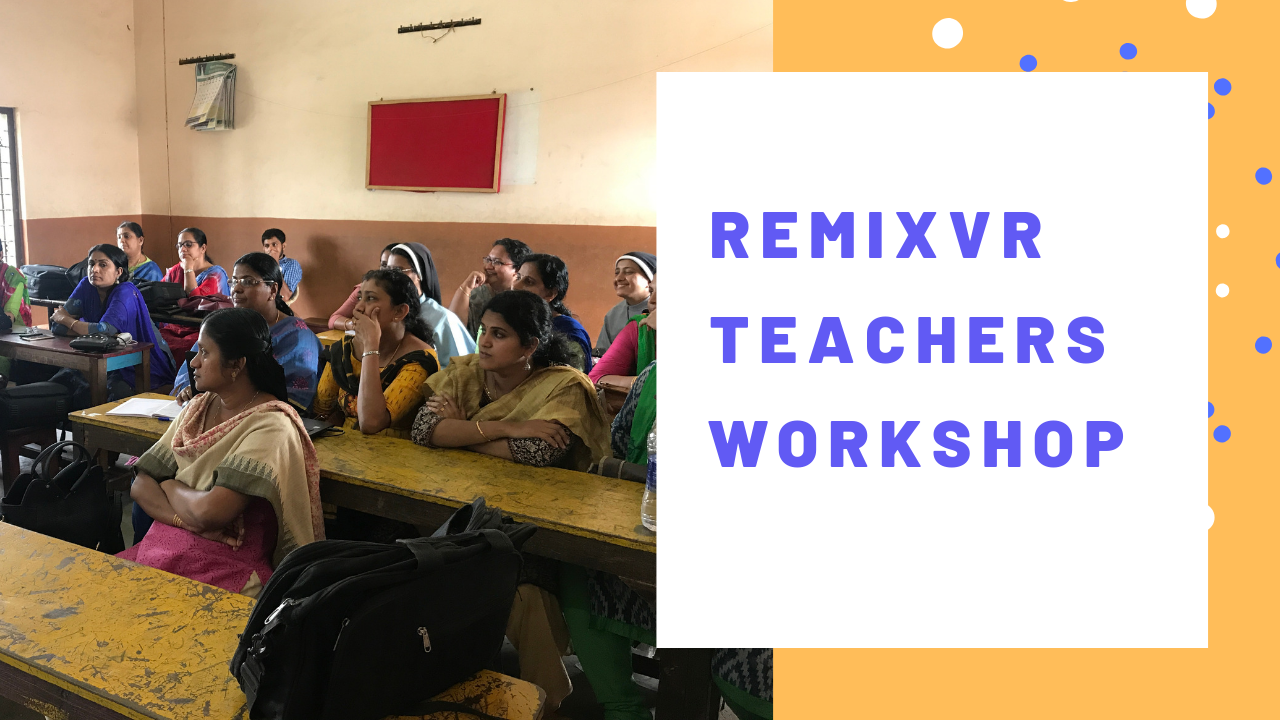Last week we conducted our very first teachers workshop in Thrissur, Kerala, India. During the time, we accomplished two things:
- Introduce Virtual Reality to teachers.
- Showcase RemixVR and gather feedback.
In this post, I’ll be sharing what we learned from the workshop.
Workshop
The workshop began with me talking about Virtual Reality. After a brief intro, I wanted to show them what it is all about. After all, seeing what it can do helps way more than me talking about it.
I had 3 VR headsets with me. One Oculus Go. One phone based VR headset (Procus). One Google cardboard.


I setup Taj Mahal lesson from RemixVR on the headsets. Then I shared the headsets with the teachers.
Most of them were experiencing VR for the first time. It was exciting to see their response.
I answered the questions teachers had about the headset and how it worked. I also explained the difference in cost and experience for these headsets.
I also talked about 6DOF headsets, but it’s hard to explain that without experiencing it first hand. Unfortunately, I didn’t have those headsets with me.
Next, I showcased RemixVR.

I opened RemixVR website on the projector and created a new project with 360 Image theme.
I then uploaded a 360 image that I took of the school minutes before starting the workshop. I entered the school’s name as text and clicked on View Project.
I opened this VR experience in all the VR headsets I had. Within seconds, teachers were able to get a VR view of the school they were in.
This accomplished two things.
- They could put in perspective how 360 images can immerse a user.
- How easy it is to create VR content and lessons using RemixVR.
I then asked for their feedbacks.
I’ve shared them below.
Challenges with RemixVR
For RemixVR to succeed, there are 3 main challenges.
- Awareness about Virtual Reality
- Budget to buy VR headsets
- Creating lessons for VR
How to overcome these challenges
Teaching about Virtual Reality
For any new technology to succeed, it has to go through few groups of people. They are:
- Innovators
- Early adopters
- Early majority
- Late majority
- Laggards
For successful introduction of RemixVR it has to follow a similar path.
We cannot see all schools as our target audience.
We need to identify the early adopter schools for the highest chance for this to work out. How would we do that?
There are couple of ways to do that:
- Look for schools with advancement in existing technology
- Look for champion teachers who are enthusiastic about VR
- Partner with companies who specialise in bringing these technology to schools
Having budget for VR headsets
This is a larger issue which we cannot influence.
Since RemixVR uses WebVR, it can support any device including laptops and mobiles.
Because of this, VR headsets are optional.
VR headsets do provide a better experience. But, 360 images and 3D environment provided by WebVR on non VR headsets is still more engaging experience than reading textbooks or watching a video.
Creating lessons in VR
One of the key advantage of RemixVR is ease of use in creating lessons. We have made it as simple as filling a form to create VR lessons.
You don’t need to fiddle around with drag and drop or know 3D programming.
A lesson created on RemixVR is accessible to any teacher on the platform. This is a major advantage.
For example, if there’s a lesson showcasing Taj Mahal, any user can search for it and use that in their classroom by sharing a link.
On top of that, customisation of these VR lessons is possible by remixing them.
This workshop has taught us a lot about having a product for VR in education. We’ll continue sharing our findings through this blog and social media. If you’re not already following us on Twitter, please do so @remix_vr
